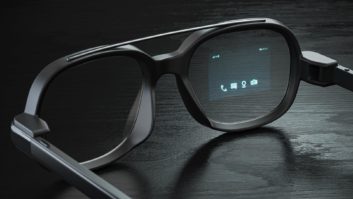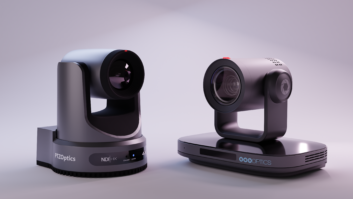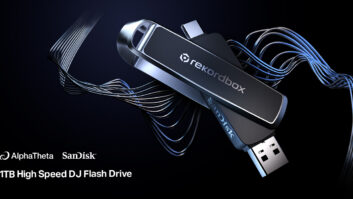What started out as a battle between CompactFlash and SmartMedia for dominance in the removable flash memory card market has broadened to include a host of new, non-compatible formats with none expected to become dominant in the near future.
Manufacturers have rolled out a slew of new formats in the past two years, including Sony’s Memory Stick, Secure Digital (SD), and Multimedia Cards (MMC). This competition has proven to be both a positive and a negative for the industry. On the plus side, prices for all types of flash memory cards have dropped precipitously in the past year. The negative aspect is these cards are not cross-compatible, which makes it hard on consumers.
This situation is unlikely to change any time soon, but the overwhelming opinion in the industry is that some type of consolidation is needed and will take place.
“I would have to think that eventually one of the technologies will have to win,” said Brad Miller, Kingston Technology, non-volatile memory manager, although he would not speculate which might disappear or survive.
Kingston produces and markets CompactFlash, SmartMedia and MMC cards.
Jack Peterson, vice president of corporate business development at Lexar Media, said, “The five media formats confuse the market and the consumer. What we need is a cross-platform solution.”
A true cross-platform solution does not appear to be in the works, but several of the most prominent flash card makers have worked on joint projects. Toshiba, Matsushita and SanDisk codeveloped the newly released SD card, while still pushing their own cards.
Sony has become the odd company out with its Memory Stick. Not only does the gum-stick shaped Memory Stick eschew the other card’s square shape, Sony is keeping the technology proprietary and requires other firms to pay a hefty fee to license the technology. However, this has not stopped Sony from grabbing a large chunk of the flash market.
Mark Viken, Sony’s vice president for IT products, claimed Memory Stick has 25 percent of the removable flash card market. An industry source said the figure was accurate, but attributed it to the large number of Memory Stick products Sony has launched more than its popularity with consumers and other vendors. So far Sony has only convinced a few vendors to produce a Memory Stick-based product, although more than 100 have expressed interest in the flash card. Several vendors said they have declined to use Memory Stick because of Sony’s licensing fee.
Memory Stick adapters, available from companies such as Imation, allow the media to be used with any USB-equipped computer.
Despite Sony’s lone stand, Lexar’s Peterson said, “The future of flash memory, I believe, is a cross between CF and MS both in size and operation. They have large capacities and the controllers built in. I would say that it would strictly be CF, but Sony has such a large share of the market that you can’t ignore MS.”
The companies backing the SD format take exception to this line of thought.
Reid Sullivan, general manager of Panasonic’s entertainment group, is determined to make SD the format of the future.
Kingston’s Miller said on a cost-per-megabyte basis, SD just is not competitive right now, but this price drop is a step in the right direction.
The company took a first step toward this goal with a major price reduction last week that dropped the street price of 64MB SD card to $99 from $159. SD’s cost had been a major roadblock, with similar size CompactFlash and SmartMedia cards priced between $50 and $70.
“The price drop was the result of an increase in production, and more cuts can be expected,” Sullivan said.
As Panasonic drives down its pricing, the company has an ambitious product road map that has a 256MB card on the market by this fall, bypassing the 128MB-size capacity. The SD format has the potential to reach 4GB, four times the capacity originally anticipated, Sullivan said. With this much memory and data transfer speeds that will touch 20MB per second, SD will become a perfect storage media for digital video, he said. Currently, SD cards have a 2MB per second transfer rate. CompactFlash and SmartMedia are available in 128MB capacity cards.
With the digital camera market and, to a lesser extent, portable digital audio player market secured, card makers see the PDA market as the next frontier for their products.
“Right now digital cameras are the No. 1 driver of sales,” said Miller, “but recently handheld PCs are coming up.”
To the surprise of many, digital audio players have not had the impact originally anticipated. Sales did not take off as expected during the 2000 holiday period, with the end result being fewer memory card sales, Miller said.
There has also been talk in the industry that audio player makers will move away from using cards, switching back to internal memory. Intel’s Pocket Concert has 128MB of internal memory and no flash card slot. A company spokesman said at the Pocket Concert’s introduction at CES in January that its research found that, since most people only used the memory cards bundled with their player, it was easier and cheaper to simply place a large amount of on board memory in the device.
“In my opinion, SmartMedia and SD will ultimately function as internal memory because of their size. They’re not as functional as CompactFlash or Memory Stick because they don’t have the form factor to pack on more memory nor the internal controllers to work with various devices,” said Peterson.
Miller tempered Peterson’s thought, saying, “I think an integration of some internal memory is possible, but the removable card offers a lot to the end user.”
Sullivan also sees a long life ahead for the card. “The flexible nature of the card means it can find its way into many CE areas,” he said, adding that there are many products that contain internal memory and can accept removable cards.
The vendors scoffed at the possibility of flash memory cards losing out to other forms of high-capacity removable media like the upcoming 500MB DataPlay disks or IBM’s MicroDrive, which has found its way into several products.
“I think DataPlay works as a good tool for mass distribution of content (like music) but not as an initial storage device. Flash just works better, faster and more stable. DataPlay and optical media work best as backups,” said Peterson.
Olympus’ John Knaur, senior product manager for digital products, added, “There is a thing as too much memory for a digital camera. If you have an optical disk that can store 500 pictures, how are you going to remember what was what when the file names are simply numbers? It’s too much to organize.”












